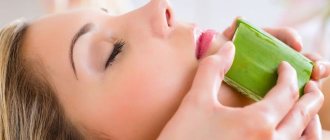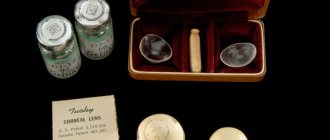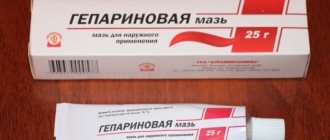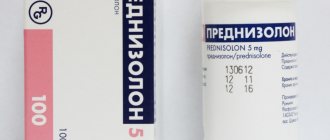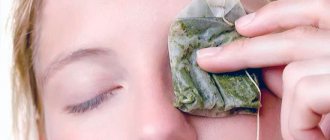The healing properties of calendula as a means of treating ophthalmic ailments were mentioned by the naturalist A. T. Bolotov back in the 18th century. He considered lotions made from calendula flowers to be especially effective in treating eye diseases. He also recommended that his patients drink calendula infusion for six months, half a glass 4 times a day, and drop the same infusion into their eyes, 3 drops 2 times a day.
In modern alternative medicine, calendula is used for diseases such as blepharitis, conjunctivitis, blenorrhea and other inflammatory processes.
Practice of using calendula and calamus roots
Many note that the greatest effectiveness of extracts, infusions and decoctions is achieved when the raw materials for their preparation are not previously subjected to harsh heat treatment. For example, fresh calendula inflorescences and leaves are placed on the eyes at night for conjunctivitis and inflammatory diseases, including purulent ones.
But it is especially effective to use calendula inflorescences in combination with calamus roots.
Calamus has astringent, enveloping, analgesic, sedative, vasodilator, antispasmodic, antimicrobial, tonic, hemostatic and sedative properties.
The combination of these two medicinal plants in one infusion gives an exceptional healing effect in the treatment of eye diseases.
Of course, it is not possible to completely cure serious ophthalmological diseases with this infusion, at least there is no official evidence of this. But it may well help reduce eye pressure, improve nutrition of the cornea and retina, normalize the composition of tear fluid, and reduce the susceptibility of the eyes to negative environmental factors.
Tinctures and infusions from these plants can be easily prepared at home from pre-prepared or purchased raw materials at the pharmacy.
Microelements selenium and zinc will ensure better absorption of antioxidants
The microelements selenium and zinc, also found in the flowers of calendula officinalis (zinc - 1.31 CBN (bioaccumulation coefficient), selenium - 4.20 CBN according to Ismagilov R. R., allow for more effective functioning of antioxidants (vitamins E and C) Kostyleva D. A.).
The positive role of these microelements in maintaining eye health does not end there. Zinc is the predominant mineral in the structure of the eye, helping to sharpen vision. Selenium is one of the participants in the process of converting a light signal into a nerve impulse, and is also an antioxidant that protects the lens of the eye from clouding.
Eye product Calendula P , of course, will not get rid of serious ophthalmological pathologies, but if taken regularly, it will provide the eyes with the necessary vitamin and mineral support, improve visual acuity, normalize eye pressure and blood circulation, improve metabolism in the tissues of the visual organs, and protect the eyes from negative effects computer.
HEALTH NEWS:
ALL ABOUT SPORTS
Sprains during training: what vitamins will help strengthen muscles and ligaments?
SPORTAuthor: admin4October 29, 2020
Pain during training arises not only from honestly performed work, but also due to various injuries. The most common of these are muscle and ligament sprains. If such seemingly frivolous damage occurs too often, this is a serious cause for concern. After all, as you know, where it is thin, it breaks.
Read more
Reasons to play sports: top 5. Train before it's too late
SPORTAuthor: admin4 September 28, 2018
Things at work, household chores, social networks - all this mercilessly devours our free time. Even going to the gym after 30 years is not easy. At the same time, banal exercises with dumbbells no longer suit you and you want something more. What are the main reasons to play sports? Where can I get the motivation to sign up for a swimming class, martial arts class, or just play…
Read more
ABOUT HEALTH
How to lose weight without sports and diets? Instructions for the lazy
Weight loss Author: admin March 42, 2021
How to lose weight without sports? Millions of people ask this question, and not only because of laziness, but also due to a simple lack of time. For example, when the work schedule is scheduled minute by minute, and the crumbs of free time are divided between activities with children and household chores - is there any time for sports? Meanwhile, the weight grows by leaps and bounds, spoils the mood,...
Read more
Alcohol tincture for oral administration
To prepare this medicine, calendula is used in dry form. Take 2 tablespoons of crushed calamus root and the same amount of dried calendula. Pour the mixture into 0.5 liters of high-quality vodka. The container with the mixture must be tightly closed and left for 2 weeks in a cool, dark place. The tincture needs to be shaken every day.
Application: The resulting medicine is used 1 teaspoon 3 times a day half an hour before meals.
The duration of treatment is about a year. It is recommended to prepare the tincture in advance for the entire course of treatment, 4 bottles of 0.5 liters each, since its effectiveness increases over time. At the end of the contents of 1 bottle of the product, you need to take a break for 1 month, and then continue the course of treatment according to the same regimen. The tincture is used to improve blood supply to the eyes and reduce intraocular pressure.
Attention!
Under no circumstances should you use alcohol tinctures for eye drops!
Contraindications
Despite all its usefulness, tincture of calamus and calendula has a number of limitations and contraindications. In particular, it is prohibited to use:
- for problems with blood pressure - chronic hypertension or hypotension;
- with acute forms of gastritis;
- for gastrointestinal disorders;
- during pregnancy or breastfeeding;
- in the presence of allergic reactions or individual intolerance to one of the components.
Summarizing all of the above, we can conclude that homemade tinctures based on calendula petals and calamus root are effective means that allow you to restore visual acuity in record time and get rid of a variety of eye ailments and pathologies. They can be taken both internally and externally.
source
General information about the procurement of raw materials for treatment
Calamus rhizomes and calendula flowers for decoctions and infusions can either be prepared independently, observing the necessary conditions and collection time, or purchased at a pharmacy or ordered in an online store.
Considering the opinion that plants retain their beneficial properties to the greatest extent without being subjected to harsh heat treatment, it should be noted that they are intended to be used for ophthalmic purposes. Therefore, you need to at least wash them more thoroughly or hold them over hot steam.
Collection and drying of calamus rhizomes
The marsh calamus grows on highly moist soil, where it can strengthen itself with its strong roots, which have many branches. The length of the root reaches one and a half meters. It grows near water, on the banks of lakes and rivers, in swamps. The plants form large thickets, sometimes interspersed with sedge and horsetail.
It grows mainly in the middle and southern zone of the European part of Russia. It can also be found in Eastern Siberia and the Caucasus. It feels comfortable in the steppe and forest-steppe zones, along the banks of reservoirs, on swampy soils, flooded fields and in ravines.
Calamus in nature | Required part of the plant (right) | Dried calamus rhizomes |
Calamus is harvested from the beginning of autumn until the beginning of winter. It is pulled out of the mud using a rake or pitchfork. Then, the already collected roots are washed from contaminants and the leaves are cut off.
After this, the roots are dried, leaving the plant in the open air, preferably in the shade. Then you need to cut the roots into pieces 10–20 cm long. If the root is too thick, then it is split lengthwise.
As a rule, raw materials are dried under a roof at a temperature of +30–35 °C; the temperature cannot be increased, since the essential oil quickly evaporates. A structure with an iron roof (warehouse or shed), heated in the sun just to the required temperature, but well ventilated, is perfect.
Rhizomes are considered well dried if they break easily.
The finished raw material is very light, spongy pieces of roots. Unpeeled roots have a flattened shape, slightly curved, yellowish-brown on the outside, with a reddish or grayish-green tint. Peeled and split rhizomes of the plant at the break and on the outside should be white or pinkish. It has a peculiar smell and spicy-bitter taste.
Under these conditions, calamus rhizome preparations contain approximately 5% essential oils. Tannins, ascorbic acid, resins, copper, and starch are also present.
Harvesting calendula
The homeland of calendula is the territories of Asia Minor and the Mediterranean. And after the discovery of its medicinal properties, it began to be imported and cultivated in other countries. Currently, the plant is widespread throughout Europe and Russia, where it is especially common in the central zone. Wild species can grow in clearings, near water bodies. But, above all, it is cultivated in summer cottages, gardens and greenhouses.
Calendula in nature | Essential part of the plant | Dried calendula flowers |
Calendula is an annual plant with an erect, branched stem and a height of 40–70 cm.
The stem is erect, branched, and covered with glandular hairs in the upper part. The leaves are alternate, light green, covered with hairs. The lower leaves are petiolate, obovate, elongated, and the upper leaves are sessile, lanceolate.
The flowers are golden-yellow or orange, collected in large apical baskets with a diameter of 4–7 cm. The marginal flowers are ligulate, pistillate. The middle ones are tubular, five-toothed, with an underdeveloped pistil and five stamens.
Blooms from June until autumn frosts. The fruits ripen starting in July and are arched, warty achenes arranged in 2–3 rows.
For medical purposes, fully blossomed inflorescences of the plant are harvested. To do this, the baskets are torn off along with the rest of the stem up to 3 cm long. During the period from mid-June to early October, it is possible to collect calendula 10–20 times. There is a break of about 2–4 days between collections. This time is enough for new flowers to appear. The climatic conditions for collection are important - a warm and dry day, after the dew has disappeared.
If half of the flowers have bloomed, then harvesting can begin. Harvesting calendula late leads to a deterioration in the quality of its seeds.
The end of the calendula harvesting season is the onset of frost. They do not prevent flowering, but can cause the loss of beneficial properties of the plant.
After collection, the medicinal raw materials must be sorted, i.e., those flowers that have lost their natural color and other impurities must be removed.
Drying should begin no later than 3-4 hours after the end of collection. Drying is carried out naturally, spreading it in a thin layer. Since ultraviolet radiation destroys biologically active compounds, use protection from direct sunlight. The permissible temperature regime for artificial drying is up to 60–80 °C, and for conventional air drying - no higher than 40–45 °C.
The healing properties of calendula decrease over time. For example, after 4 months the content of carotenoids drops by 6 times. Therefore, storing raw materials for more than a year is impractical.
Drying is considered complete if, when pressing on the inflorescences, they easily disintegrate. If all these conditions are met, the smell of the dried raw material should be slightly aromatic, and the taste should be bitter, with a slight feeling of mucousness.
It is recommended to store the finished raw materials in cloth or paper bags, sometimes opening them so that the calendula can “breathe.”
Brief treatment plan for cataracts
For infusion, take 1 tablespoon of dry calendula baskets. Pour one glass of boiling water and leave covered for 15 minutes. After which the resulting mixture must be filtered and cooled to room temperature.
Application: used for cataracts 4 times a day, 0.5 cups. The same infusion should be instilled into the eyes, 3 drops 2 times a day. To achieve the effect, you also need to eat blueberries (can be dried) 1 tablespoon 3 times a day. In addition, you must also perform eye exercises to stimulate the circulation of intraocular fluids. The course of treatment should be at least 6 months.
We recommend reading:
- Stye on the eye. How to cure it yourself
- Chickweed and its benefits for the thyroid gland

